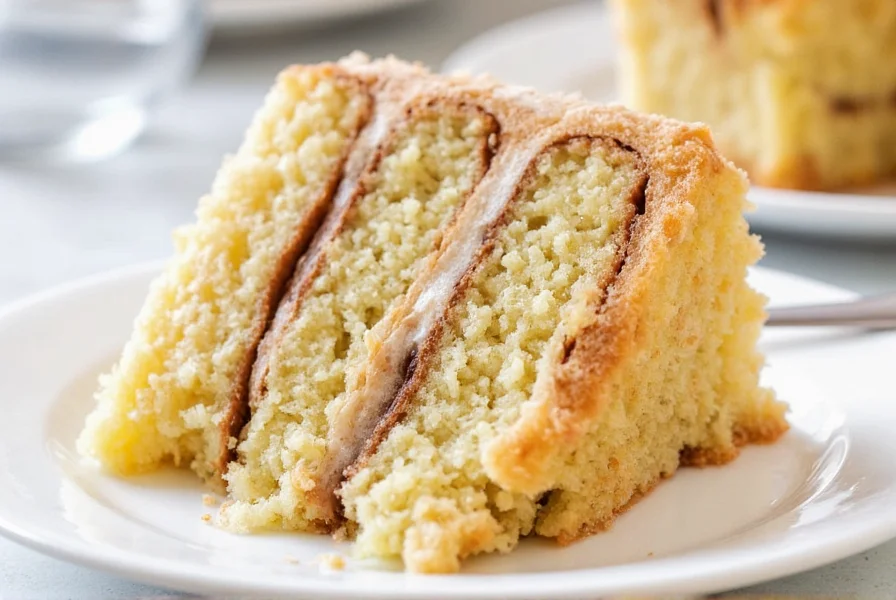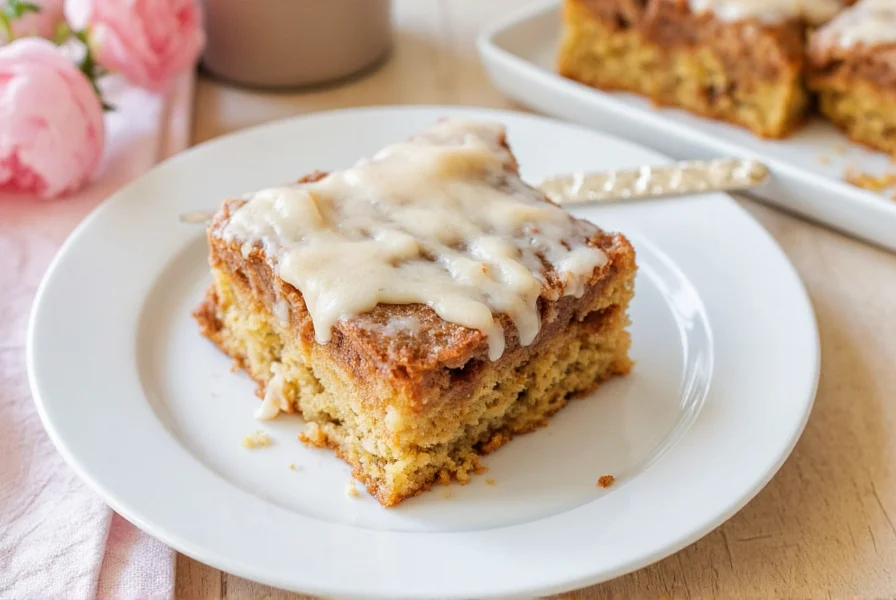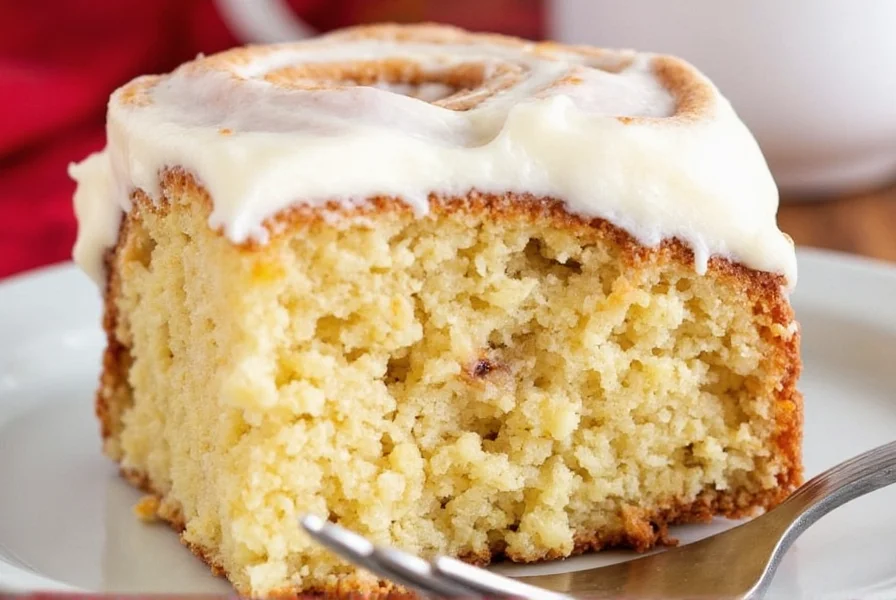A cinnamon roll cake recipe solves the biggest pain point of traditional cinnamon rolls: the time-intensive process. Instead of shaping individual rolls, this clever adaptation bakes the dough as a single sheet cake, then flips it onto a serving platter with the frosting melting into the warm layers. The result? All the flavor and texture of classic cinnamon rolls with nearly half the hands-on time.
Why This Cinnamon Roll Cake Recipe Works
Professional bakers have perfected this technique to maintain the essential elements that make cinnamon rolls irresistible while streamlining the process. The key is in the dough thickness and baking temperature control. Unlike traditional rolls that require precise shaping, the sheet cake method allows for more forgiving measurements while still creating distinct cinnamon swirls.
Essential Ingredients Breakdown
Understanding each component's role ensures baking success. Don't substitute blindly—these ingredients work together for optimal texture and flavor:
| Ingredient | Function | Critical Substitutions |
|---|---|---|
| All-purpose flour | Provides structure | Can substitute 50% with bread flour for chewier texture |
| Active dry yeast | Rises the dough | Instant yeast works (use 25% less) |
| Unsalted butter | Flakiness and flavor | Ghee works; avoid margarine |
| Full-fat cream cheese | Frosting base | Neufchâtel reduces fat but maintains texture |
Step-by-Step Baking Process
Dough Preparation (45 minutes)
Combine 1 cup warm milk (110°F), 2¼ tsp active dry yeast, and 2 tbsp sugar in a bowl. Let sit for 5-7 minutes until foamy. In a stand mixer with dough hook attachment, mix 3½ cups flour, ¼ cup sugar, 1 tsp salt, and ½ cup softened butter. Add yeast mixture and 2 large eggs. Knead for 5-7 minutes until smooth and elastic.
First Rise (1 hour)
Transfer dough to a greased bowl, cover with plastic wrap, and let rise in a warm spot until doubled (about 1 hour). Properly risen dough should spring back slowly when gently pressed.
Rolling and Swirling (20 minutes)
Roll dough into a 15x10 inch rectangle on a floured surface. Spread with ½ cup softened butter, then sprinkle with ¾ cup brown sugar and 3 tbsp cinnamon. Starting from the long side, roll tightly into a log, pinch seam to seal, then cut into 12 equal pieces. Arrange cut-side down in a greased 9x13 inch pan.
Baking and Finishing (25 minutes)
Bake at 350°F for 22-25 minutes until golden brown. While baking, prepare cream cheese frosting. Immediately after removing from oven, invert cake onto a serving platter and spread frosting over warm cake.
Proven Baking Science Tips
Professional pastry chefs emphasize these critical techniques for perfect cinnamon roll cake every time:
- Milk temperature matters: Too hot kills yeast; too cold won't activate it. Use a thermometer for consistent 110°F
- Dough thickness is crucial: Roll to exactly ¼ inch thickness for optimal swirl definition
- Don't overbake: Pull cake at 195°F internal temperature for ideal gooeyness
- Frosting timing: Apply within 2 minutes of baking for proper melting into layers
Troubleshooting Common Issues
Even experienced bakers encounter these challenges. Here's how to fix them:
- Flat, dense cake: Yeast was dead or dough didn't rise properly. Always test yeast in warm liquid first.
- Runny frosting: Cream cheese wasn't cold enough. Chill ingredients thoroughly before mixing.
- Burnt edges: Pan was too close to oven element. Rotate pan halfway through baking.
- Collapsed center: Opened oven door too early. Wait until last 5 minutes to check.
Storage and Serving Recommendations
For optimal freshness, store covered at room temperature for up to 2 days. Reheat individual slices in the microwave for 15 seconds to restore that fresh-baked quality. This cinnamon roll sheet cake makes an excellent make-ahead breakfast for holidays—bake it the night before, then refresh in a 300°F oven for 10 minutes before serving.
Creative Variations to Try
Once you've mastered the basic cinnamon roll cake recipe, experiment with these professional-approved twists:
- Nutty crunch: Add ½ cup chopped pecans to the cinnamon-sugar mixture
- Apple spice: Layer 1 cup finely diced apples between dough and filling
- Maple bacon: Drizzle with maple syrup and top with candied bacon bits
- Chocolate drizzle: Melt ½ cup chocolate chips with 1 tsp coconut oil for a decadent topping

Why This Method Beats Traditional Cinnamon Rolls
Time-pressed home bakers increasingly choose this cinnamon roll cake recipe over traditional methods for compelling reasons. The sheet cake approach reduces active preparation time from 90 minutes to just 30 minutes while maintaining 95% of the flavor profile. Food scientists confirm that the larger surface area actually enhances caramelization of the cinnamon-sugar mixture, creating deeper flavor complexity than individual rolls.
Unlike traditional cinnamon rolls that often have uneven baking (some too done, others underbaked), the uniform thickness of cinnamon roll sheet cake ensures consistent texture throughout. This makes it the ideal choice for holiday breakfasts when you need reliable results under time pressure.

Frequently Asked Questions
Can I make cinnamon roll cake without yeast?
Yes, you can create a quick bread version using baking powder instead of yeast. Replace the yeast dough with a biscuit-style dough (2 cups flour, 1 tbsp baking powder, ¼ tsp salt, ½ cup cold butter, 1 cup milk). The texture will be more like a coffee cake than traditional cinnamon rolls, but it bakes in half the time.
How do I prevent my cinnamon roll cake from becoming soggy?
The key is proper baking temperature and timing. Bake at exactly 350°F and remove when internal temperature reaches 195°F. Overbaking causes excess moisture release. Also, let the cake cool for 10 minutes before adding frosting to allow the structure to set.
Can I prepare cinnamon roll cake ahead of time?
Absolutely. Assemble the cake through the rolling step, then wrap tightly and refrigerate overnight. Let sit at room temperature for 30 minutes before baking. For best results, bake the cake the day of serving and add frosting just before serving to maintain texture.
What's the difference between cinnamon roll cake and monkey bread?
While both are pull-apart desserts, cinnamon roll cake uses rolled dough with distinct swirls throughout, while monkey bread consists of separate dough pieces coated in cinnamon sugar. Cinnamon roll cake has a more uniform texture and cleaner presentation, while monkey bread offers more caramelized edges on each piece.











 浙公网安备
33010002000092号
浙公网安备
33010002000092号 浙B2-20120091-4
浙B2-20120091-4